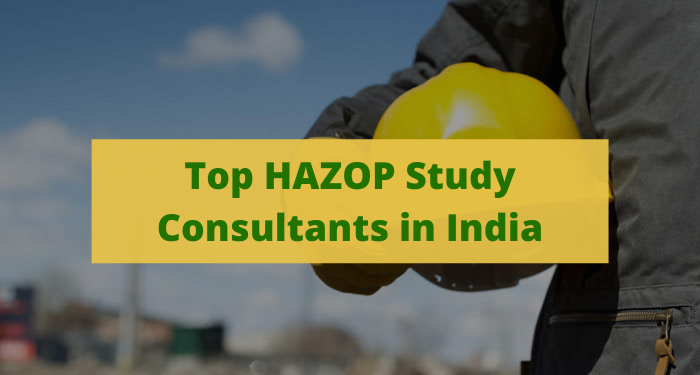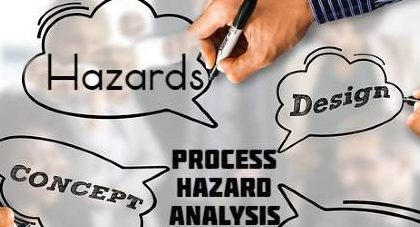HAZOP, Safety Integrity Level Assessment and LOPA study by TheSafetyMaster
Expert Insights: Why Safety Consultants are Vital for Business Success
August 23, 2023
Electrical Safety Audit and Residual Life Assessment by TheSafetyMaster
August 23, 2023Explore the realm of process safety and elevate your understanding of Hazard and Operability Studies (HAZOP), Safety Integrity Level (SIL) Assessment, and Layers of Protection Analysis (LOPA) with TheSafetyMaster. In today’s complex industrial landscape, ensuring the safety and integrity of operations is paramount. With our expertise in HAZOP, SIL, and LOPA studies, we empower organizations to identify and mitigate potential risks, safeguarding their assets, personnel, and reputation.
Throughout this article, we will delve into the intricacies of HAZOP analysis, SIL assessment, and LOPA studies to provide you with a comprehensive understanding of these vital tools for risk management. Whether you are an industry professional seeking to enhance your knowledge or an organization looking to bolster your safety culture, our aim is to equip you with valuable insights that can be applied in real-world scenarios. Join us on this enlightening journey as we unravel the power of HAZOP, SIL assessment, and LOPA studies.
Understanding HAZOP: A Journey into Process Safety
Process safety is the cornerstone of any successful industrial operation, ensuring the protection of human lives, the environment, and valuable assets. At the heart of this crucial discipline lies Hazard and Operability Study (HAZOP), a systematic and analytical approach that identifies potential hazards and operational deviations in a process.
Embark on a journey with us as we delve into the world of HAZOP, unearthing its significance in safeguarding industries. Imagine a labyrinthine facility where complex processes intertwine like clockwork. Now picture HAZOP as your compass, guiding you through this intricate maze to pinpoint vulnerabilities and design flaws.
The Power of Safety Integrity Level Assessment: Keeping Risk at Bay
In the realm of process safety, there exists a powerful tool that acts as a shield against potential disasters – Safety Integrity Level (SIL) assessment. This robust methodology evaluates the reliability and effectiveness of safety systems, ensuring that risks are comprehensively identified and mitigated. SIL assessment empowers industries to proactively address hazards and implement appropriate safeguards, thus fostering a culture of safety that protects not only assets but most importantly, human lives.
At its core, SIL assessment is a quantitative approach that assigns levels of risk reduction to different layers of protection within a system. By meticulously analyzing each layer’s ability to prevent or mitigate potential accidents, industries gain valuable insights into the overall integrity and effectiveness of their safety systems. This comprehensive evaluation aids in making informed decisions about allocating resources towards improving safety measures where they are most needed, ultimately resulting in enhanced risk management strategies.
LOPA Study: Unveiling the Layers of Protection
Within the realm of process safety, a LOPA study stands as a formidable tool in identifying and analyzing potential hazards that could jeopardize operations. LOPA, or Layers of Protection Analysis, offers a systematic approach to evaluate the effectiveness of existing protective measures and determine if additional safeguards are necessary. It unravels the intricate layers that shield us from harm, providing clarity and insight into the overall safety landscape.
LOPA unveils every facet of protection by meticulously assessing independent protection layers (IPLs) and their ability to mitigate risk. By assigning a level of reliability to each layer, LOPA quantifies the overall risk reduction achieved. This comprehensive analysis enables organizations to make informed decisions about whether further protective measures are required, ensuring that they have an optimized safety infrastructure in place.
Step-by-Step Guide: Conducting a HAZOP Analysis
Delving into the intricate world of process safety, a HAZOP (Hazard and Operability) analysis is a comprehensive methodology used to systematically identify potential hazards and operational deviations in complex industrial systems. By meticulously examining each component and process parameter, this step-by-step guide illuminates the path towards a successful HAZOP analysis.
1. Define the Purpose: Clearly establish the objectives and scope of the HAZOP study. Determine which system or process will be analyzed, ensuring that all relevant stakeholders are involved.
2. Assemble the Dream Team: Gather a multidisciplinary team consisting of experts from various disciplines such as engineering, operations, safety, and maintenance. This diverse group brings together valuable perspectives that will enhance the effectiveness of the analysis.
3. Identify Deviation Parameters: Identify key process parameters for scrutiny by examining P&IDs (Process and Instrumentation Diagrams) or other relevant documentation. These parameters act as triggers for brainstorming potential deviations.
4. Brainstorming Session: Engage in an open-minded brainstorming session where team members collectively explore potential deviations associated with each parameter identified in the previous step. Encourage creativity and out-of-the-box thinking to uncover hidden risks.
5. Analyze Deviations: Analyze each identified deviation by assessing its consequences, causes, safeguards currently in place, and potential prevention measures to mitigate risks effectively.
6. Document Findings: Ensure meticulous documentation of all findings during the analysis phase to maintain transparency and create an auditable record for future reference or regulatory compliance purposes.</
Demystifying Safety Integrity Level Assessment: Your Key to Risk Mitigation
In the intricate world of process safety, where the stakes are high and the consequences dire, Safety Integrity Level (SIL) Assessment stands as a formidable shield against potential hazards. SIL Assessment is a systematic approach that quantifies risk reduction measures, enabling organizations to make well-informed decisions that enhance safety outcomes.
At its core, SIL Assessment evaluates the performance and reliability of safety instrumented systems (SIS) in mitigating identified risks. By assigning SIL ratings to these systems, organizations can ascertain their effectiveness in reducing potential harm to an acceptable level. This comprehensive analysis empowers decision-makers to prioritize resources and investments towards areas with higher risk levels, ensuring maximum protection for personnel, assets, and the environment.
Beyond its technical aspects, SIL Assessment embodies a culture of proactivity. It fosters a mindset that values continuous improvement and vigilance in monitoring and managing risks throughout an organization’s lifecycle. By shedding light on potential vulnerabilities and weaknesses within systems, SIL Assessment acts as a catalyst for positive change and empowers organizations to strengthen their commitment towards safety excellence.
Crafting an Effective LOPA Study: The Blueprint for Safety
When it comes to ensuring safety in complex industrial processes, a well-executed Layers of Protection Analysis (LOPA) study is the ultimate blueprint for success. LOPA provides a systematic approach to identify and evaluate layers of protection against potential hazards, enabling organizations to make informed decisions about risk reduction measures. This section will delve into the essential components of a comprehensive LOPA study, highlighting the key steps and considerations that pave the way towards achieving a safer future.
A successful LOPA study begins with thorough hazard identification, where all potential risks are meticulously assessed and documented. Next comes the determination of tolerable risk levels based on industry standards and best practices. This stage sets the foundation for establishing required safety integrity levels (SILs) for each independent protection layer (IPL). Careful selection and analysis of IPLs follow suit, considering factors such as reliability, performance standards, and possible failures. By integrating expert knowledge with quantitative data analysis, organizations can optimize their safety systems while striking a balance between effectiveness and cost-efficiency.
Real-Life Success Stories: How HAZOP, SIL, and LOPA Transform Industries
As industries continue to prioritize safety, the implementation of HAZOP, SIL, and LOPA studies has proven to be a game-changer. Let’s delve into some real-life success stories that illustrate the transformative power of these methodologies in various sectors.
In the chemical industry, a major petrochemical plant successfully conducted a comprehensive HAZOP analysis. By meticulously examining each process parameter and identifying potential hazards, they were able to identify critical safety improvements that mitigated the risk of catastrophic incidents. As a result of implementing these recommendations, not only did they achieve zero accidents for several consecutive years but their overall operational efficiency improved significantly. This success story is a testament to the positive impact HAZOP studies can have on an industry’s safety culture.
A Proactive Approach: Integrating HAZOP, SIL, and LOPA into Your Safety Culture
Creating a robust safety culture is not just about ticking boxes on a checklist; it requires a proactive approach that integrates HAZOP, SIL, and LOPA studies at its core. By seamlessly incorporating these methodologies into your organization’s DNA, you can foster a work environment where safety is prioritized and risks are mitigated with unwavering commitment.
Embracing HAZOP, SIL, and LOPA as essential components of your safety culture empowers your team to think critically about potential hazards and implement effective measures to prevent accidents. It encourages open communication, collaboration, and continuous improvement. By integrating these practices into everyday operations rather than treating them as isolated exercises, you lay the foundation for sustainable success while inspiring confidence among stakeholders.
Industry Best Practices: Lessons Learned and Expert Insights
When it comes to HAZOP, Safety Integrity Level (SIL) assessment, and Layer of Protection Analysis (LOPA), industry best practices can provide invaluable guidance. Over the years, numerous lessons have been learned from real-life incidents and experts in the field. These insights offer a wealth of knowledge for organizations seeking to enhance their safety cultures and mitigate risks effectively.
One key lesson learned is the importance of fostering a proactive mindset within teams. Encouraging open communication channels enables employees to voice concerns or potential hazards early on, preventing them from escalating into major incidents. Moreover, organizations that prioritize regular training and professional development ensure that their personnel stay well-informed about the latest methodologies and industry standards.
Experts in the field emphasize that successful implementation of HAZOP, SIL assessment, and LOPA requires strong leadership commitment. Safety should be ingrained into every aspect of an organization’s operations, from top-level management down to frontline workers. By making safety a core value, companies create an environment where employees feel empowered to take ownership of risk identification and mitigation strategies.
In addition, collaboration among different departments is crucial for effective risk management. Engaging various stakeholders throughout the process allows for a comprehensive understanding of potential hazards across all stages of a project or operation. By harnessing collective expertise from engineering teams, maintenance crews, safety professionals,and other key players in an organization’s ecosystem, organizations can implement robust safety measures that encompass diverse perspectives.
Empowering Your Team: Training and Resources for HAZOP, SIL, and LOPA
When it comes to ensuring the safety of your team and the success of your operations, knowledge is power. Empowering your team with comprehensive training and access to valuable resources is essential in effectively implementing HAZOP, SIL, and LOPA methodologies. The first step towards empowerment is providing your personnel with thorough training on these critical processes.
Investing in specialized courses facilitated by experienced professionals allows your team members to acquire a deep understanding of HAZOP, SIL, and LOPA practices. These courses not only cover theoretical concepts but also include hands-on exercises, case studies, and interactive discussions that help participants gain practical skills. Equipped with this knowledge, your team will be able to identify potential hazards more efficiently while developing robust mitigation strategies.
Conclusion: Embrace the Power of HAZOP, SIL, and LOPA for a Safer Future
In conclusion, embracing the power of HAZOP, Safety Integrity Level Assessment, and LOPA study is paramount for ensuring a safer future in industries dealing with complex processes. By conducting thorough analyses and assessments, companies can identify potential hazards, mitigate risks, and develop robust layers of protection to safeguard their operations.
Moreover, by integrating these practices into their safety culture, organizations empower their teams with the knowledge and tools necessary to proactively address potential risks. This proactive approach not only enhances safety but also contributes to increased operational efficiency and productivity.
As we navigate the ever-evolving landscape of industrial processes, it is reassuring to know that HAZOP, SIL assessment, and LOPA continue to transform industries by fostering a culture of safety. By investing in training programs and providing resources for ongoing development in these areas, companies can stay ahead of the curve and adapt to emerging challenges.
With Best Wishes
Sanjeev Paruthi
TSM TheSafetyMaster® Private Limited
Unit No 221-451-452, SPL1/J, 2nd & 4th Floor, Sunsquare Plaza Complex, RIICO Chowk, Bhiwadi 301019, Rajasthan, India
Phone: +91 1493 22 0093
Mobile: +91 7665231743/9413882016
Email: info@thesafetymaster.com




